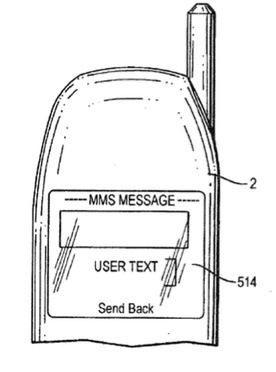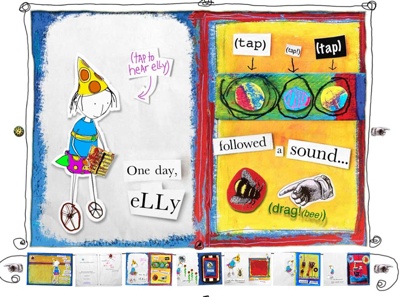An Apple patent (patent number 20120238299) for a messaging system and service has appeared at the U.S. Patent & Trademark Office. It involves a method of modifying a data message during transmission through a data communications network, the data communications network being arranged to deliver messages under control of a network operator and including a first store-and-forward network node.
The first store-and-forward network node is arranged to store data messages and forward the same to a recipient in dependence on status data corresponding to a terminal associated therewith. The method further includes receiving a message at a second store-and-forward node, wherein the second store-and-forward node is different from the first store-and-forward network node, arranging for the message to be modified before being forwarded from the second store-and forward node, and transmitting the message to the first store-and-forward network node for forwarding to the recipient.
Here’s Apple’s background on the invention: “Currently the Short Message Service (SMS) is the medium of choice for personal messaging, and several companies have designed systems that are intended to include advertisement information in SMS messages. For example, International patent application WO 03/015430 describes a service whereby advertisement data (including length of advertisement (number of characters), a preview of the advertisement and an identifier associated with the advertisement provided by external sources) are stored on mobile terminal in a ‘local’ store, and the user selects an advert, from the store, to accompany an outgoing message.
“The terminal then calculates a length available for text, and the sender is allowed to enter a message having a length up to the calculated length. An outgoing message is then created, comprising the advertisement ID associated with the selected advertisement and the users message text, and having a header indicating that the message has advertising content.
“The outgoing message is then sent from the terminal and received by the SMSC, which checks the header of the message; any message having an identifier corresponding to the advertisement type is passed to an ‘ad server.’ The ad server processes the message, effectively selecting an advertisement from a store, creating one or more messages that comprise the selected advertisement and creating an SMS message that can be read by the recipient’s mobile phone terminal.
“Since advertisements are selected by the sender from those stored locally on terminal, the terminal needs to be equipped with appropriate software, and the currently selectable advertisement IDs need to be distributed to all subscribing terminals. In addition, the SMSC has to be equipped with some means of identifying these advertisement-type messages from other types of messages in order to route them to the ad server.
“Furthermore, since each SMS message is limited to 160 characters, the ad server quite often creates a plurality of messages, which means that either the receiving terminal has to be equipped with some software that concatenates the messages together in some elegant manner (since presentation is very important with advertising), or the receiving terminal simply displays the messages separately, as is the case with non-modified SMS messages exceeding 160 characters in length. Neither of these is ideal from the point of view of convenience or presentation.
“The new messaging service, known as Multimedia Messaging Service (MMS), offers messages of unlimited size and content type that are compiled as HTTP messages, which means that they offer a transaction capability with possible super-distribution of content along with accuracy, tracking and feedback of messages. However, despite the fact that many mobile telephones have imaging and Multimedia Messaging Service (MMS) capabilities, and despite the fact that the Multimedia Message Service would appear to be a natural choice of messaging format for including advertising content, there is no guarantee that MMS will become as ubiquitous as SMS.
“This is due to several reasons, namely that there is a perceived high cost of Multimedia messaging; that SMS fulfils basic personal messaging needs; and that rich media messaging requires more imagination and preparation by the user. An object of the present invention is to provide a convenient method of modifying messages, which, from the point of view of the end user, is simple to use.”
The inventors are Harri Myllynen, Pasi Leino and Antti Ohrling.
Also appearing today at the U.S. Patent & Trademark Office are:
° Patent number 2012023293 for methods, systems, and apparatus, including computer programs encoded on computer storage media, for track simplification and correction;
° Patent number 20120239692 for dynamic management of multiple persistent data stores;
° Patent number 20120234096 for a method and apparatus for checking an acoustic test fixture;
° Patent number 20120235029 for a system for testing an IR proximity sensor that has an infrared reflector that receives radiation transmitted from the proximity sensor under test;
° Patent number 2012023646 for a mounting structure for a component of an electronic device;
° Patent number 20120236658 for systems and methods for refreshing non-volatile memory;
° Patent number 2012037040 for a system and method for automated audio mix equalization and mix visualization;
° Patent number 2012038251 for text message transmission indicating the failure of a recipient mobile device to connect with a call;
° Patent number 2012038299 for a method for entering text in a text input field using a non-keyboard type accessory that includes selecting a character for entry into the text field presented by a portable computing device;
° Patent number 2012039692 for dynamic management of multiple persistent data stores;
° Patent number 2012039911 for value check instruction for processing vectors.



